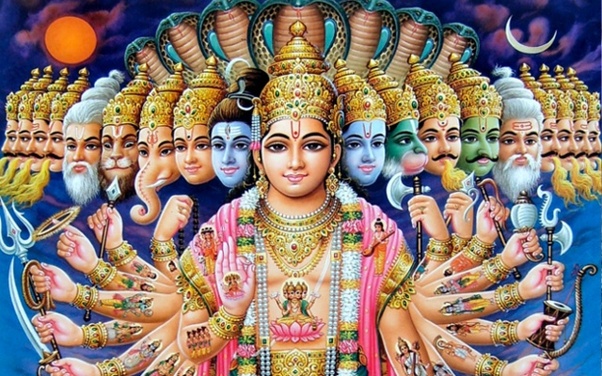Paramacharya of SWAHA, Pt. Hardeo Persad
Our scriptures tell us, on a daily basis we should worship the five aspects of Divinity, the Panch Devta: Ganesh Baba, Devi Maa, Shivaji, Satyanaaraayan Swami and Surujnaaraayan Swami. When I worship Ganesh Baba, I develop vivek, the power of discernment between the real and the unreal. When I worship Devi, I develop mumukshutva, that intense longing to be in oneness with my true nature, which is Divinity. When I worship Shivaji, I develop vairaagya or the power of tyaag, dispassion and letting go so that I can move forward and attain spiritual perfection. When I worship Satyanaaraayan Swami, I develop satyam (truth) but also maintain sattvic prakriti, the state of piety and spirituality. From there I can move beyond the three gunas (modes of existence).
When I worship Surujnaaraayan Swami, the intellect becomes enlightened. The intellect can be enlightened, unenlightened and relative. It is said that great minds reflect upon principles, average minds upon events and low minds upon people. The enlightened intellect reflects upon principles, that inner sun of divine wisdom is awakened and I am able to remove the dualities of life. It is said, if one sees a piece of coiled rope in darkness or semi-darkness, there is doubt in the mind whether it is a rope or a snake. If I apply a light I see its true nature and duality disappears. It is said that Brahm cannot be separated from Shakti. As Hindus, we also glorify Brahman-Shakti: Lakshmi-Naaraayan, Brahma-Saraswati, Shiv-Parvati, Umapati-Shankar, Radha-Krishna and Raam-Sita.
The Divine is also worshipped in avataar form. More than 5,000 years ago, the earth was burdened. Negative forces were dominant and the devotees of God were in distress. Even those who were entrusted with the responsibility of protecting others, were themselves victims or perpetrators of crimes. Under such circumstances, there was only one solution: the Divine. It is said at that point in time, as has happened many times in every age or yug, the devotees appealed to that Supreme Being for His timely intervention. That name of the Lord was chanted, and He was sought after, the One who never fails, the One who needs nothing except the devotee’s love. The devotees at that time were dependent and lost, yearning for the presence of the Lord. What greater power exists than the name of the Lord? Sincere prayer brought results and that Lord manifested Himself in the form of Bhagavan Shri Krishna.
There are various types of avataar or manifestations of God: guna (Brahma, Vishnu and Shiva), vyuha (bringing salvation), leela (partial or full manifestations), ansha (partial), purna (full) and avesha (indirect and endowed) avataar. Shri Krishna was a vyuha avataar, where that infinite Brahm manifested Himself to teach the world and save His devotees. In Treta Yug, the Lord appeared in four forms: Shri Raam, Bharat, Lakshman, Shatrugan. In Dwapar Yug, the same four vyuha avataar manifested as Shri Krishna, Balram, Pradumna and Aniruddha. The purpose of Shri Krishna’s manifestation was to remove the burdens of the earth but more importantly, to teach us as Jagat Guru.
Ramayan tells us that one of the reasons for the manifestation of the Divine is that He creates leelas, or activities, which are documented by the sages. The Lord creates these leelas for our benefit, so we can listen to them and free ourselves from bondage. The mind is turbulent and tenacious. The mind is likened to a bull due to its stubbornness and sluggishness, but also its great strength. It must be harnessed to the plough to reap the benefits of spirituality. When we read or listen to the glories of the Divine, all the traps and illusions (maya) of this world can be overcome.



